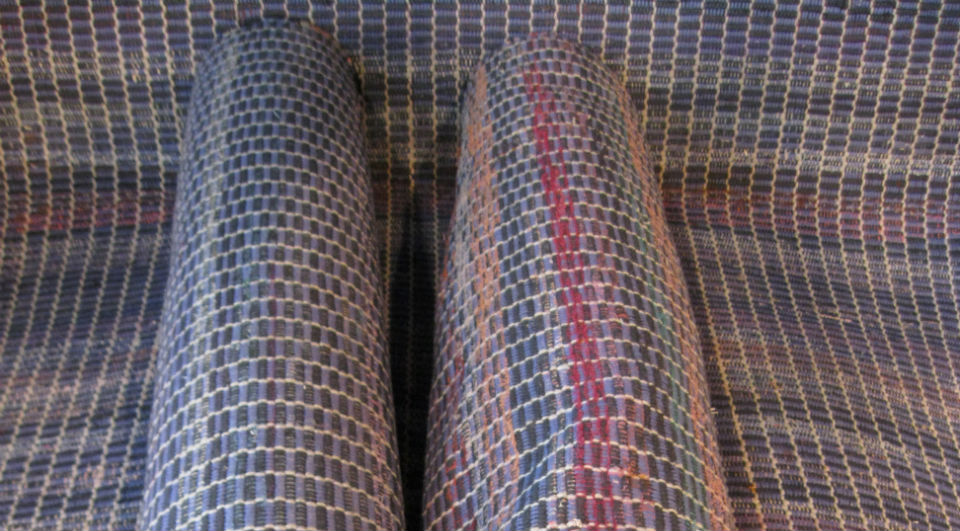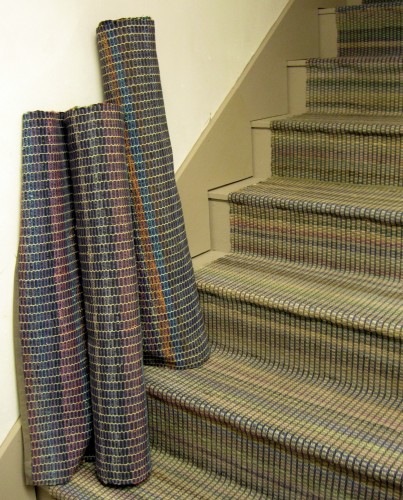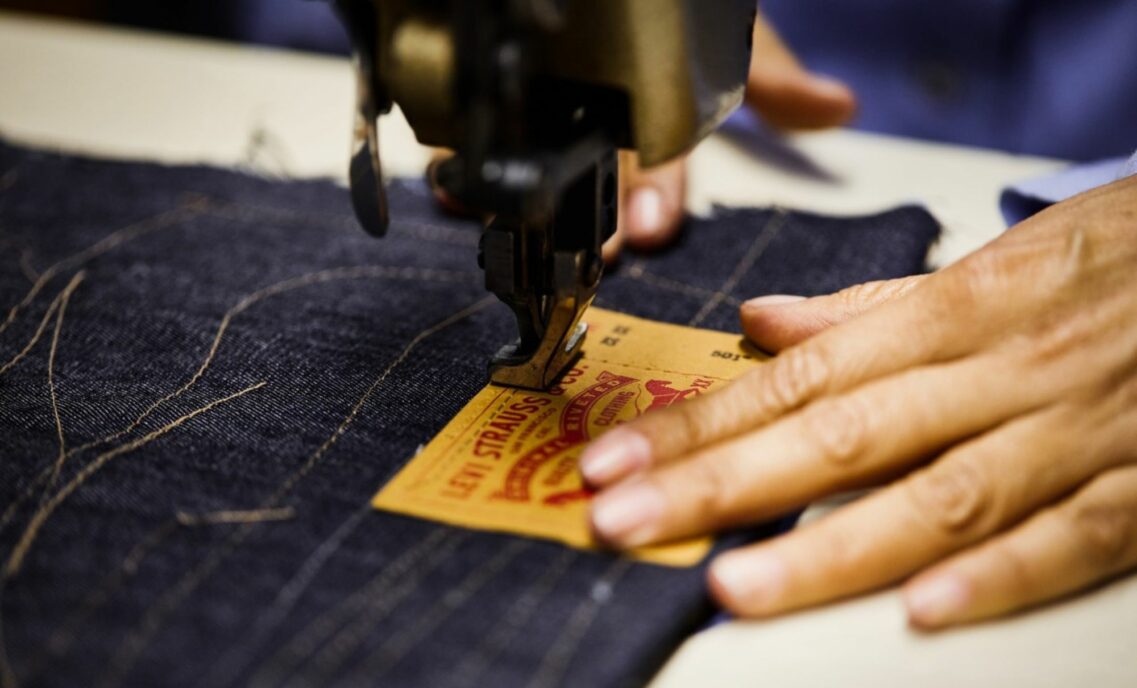Different cultures find different methods to prolong the lifecycle of their jeans: donation, transformation and insulation, to name just a few. Rag carpets (tightly woven rugs made from strips of tattered denim) are one way historic communities reused their denim and other clothing.
These utilitarian pieces are a testament to both the resourcefulness of historic communities, and the inherent durability of denim. They were woven by the Pennsylvania Dutch and the Amish beginning the late 19th century and into the early 20th century. They first appeared in Lancaster County, PA, though the craft eventually spread all the way to the Midwest.
“This was a way to use up the remnants of cloth at the end of its life,” explains quilt Collector and fabric historian Gerald Roy of Pilgrim/Roy. Cloth was valuable, and rather than throwing it away, people found a way to use it—right up until it disintegrated.
In Amish communities, these tattered garments were often blue denim work clothes, along with other materials. The blues of the denim, along with the blues and purples common in their attire, produced distinctive carpets with soft tones of faded blue, denim, and violet.
Rugs were woven in the winter months, when there weren’t as many chores to be done outside. Crafters cut pieces from old clothes into long narrow strips and sewed them together end-to-end. These stripes were then woven on a three-foot loom.
Although the size of finished rugs varied, nine-foot and twelve-foot lengths were common. The pieces’ narrow width made them ideal for stairways and runners in hallways. Alternatively, several pieces were often joined together. (For instance, three 3’x12’ lengths were often sewn together to create a standard 9’x12’ area rug).
Compared to quilting, rag carpets were a more utilitarian craft, with little attention paid to decoration or design. The rugs are characterized by an extremely tight weave, and are denser with a more durable surface than other rugs from the same era.
The rugs’ strength is a result of both the material used and the tight weaving technique. Besides the pieces narrow width, their sturdiness made them ideal for use in areas like staircases, where there is much wear and tear.
Traditionally, Amish didn’t use heavily decorative objects in their homes, because it was against their beliefs. Because rag carpet was a “home industry,” the rugs maintained pure functionality and simplicity. For Roy, this subdued and utilitarian aspect is part of the carpets’ beauty. “These are very quiet pieces,” he said. “The color is the palest of blues. They are beautiful and elegant because they are so simple and subtle.”
According to Roy, time stands relatively still in the Amish communities. But even as early as fifty years ago, labor intensive crafts had begun to evolve into less time-consuming methods. Today the rugs the Amish make, both for themselves and to sell to non-Amish, are more decorative and colorful, and less tightly woven than the originals.
Authentic examples of the old rag carpet are rare, only sourced through antique dealers or country auctions. But for home decorators, and historians like Roy, the quest for an original rag carpet is worth it. These relics hold a special place in the history of denim upcycling, and are testament to days gone by.








